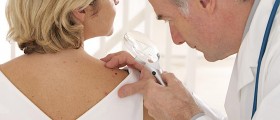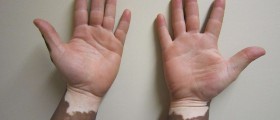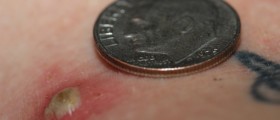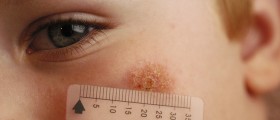
The term “mole” refers to a benign pigmented lesion on the skin. In some cases, one can mistake a malignant, harmful melanoma for a benign, harmless mole. It is often difficult to tell the difference with the naked eye. Thus, it might be a good idea to consult a health professional in order to determine the true nature of a mole.
Who's at Risk?
Moles are very common throughout the world, especially with regard to those who are fair skinned. In those with darker skin types, moles are less common. A high number of moles on one person might indicate something of a risk factor for melanoma. Always make sure you are protected from the harmful rays of the sun. For the most part, moles appear after birth and develop through childhood. If an inherited or previously benign mole begins to grown in size or displays irregularity around the sides, it might indicate the possible onset of melanoma growth. If the mole itches or bleeds, this might also be a sign of danger.
Medical Examination
A doctor will try to ascertain whether the mole has been present from childhood or whether it has developed over the years. If the latter is true, then the doctor will ask questions regarding pain, itching, bleeding, ulceration or irritation. Remember that if the mole has changed side, this is something that should be brought to the doctor’s attention. Similarly, if you have a family history of melanoma or naevus syndromes, be sure to point it out to the doctor.
When examining a mole, a doctor will check the physical appearance of the mole. It is important for the doctor to rule out similar conditions such as seborrheic keratoses. A melanoma will normally be large in diameter, asymmetrical and might have variable pigmentation. A doctor might also carry out a full body skin check in order to rule out the presence of any other moles. The color of a mole can vary, and they may be tan, brown, skin color or even black.
No laboratory studies will be performed if you are diagnosed with congenital or common acquired moles. If there are suspicions about the malignancy of the mole, a doctor might arrange for a simple excisional biopsy. Most moles carry a low risk of melanoma development. However, be sure to check the situation with your doctor or a medical professional.Treatment
In the vast majority of cases, moles require no further treatment. If you wish to have the mole removed for cosmetic reasons, they can be surgically removed easily through processes known as tangential or shave excisions. Larger moles will require full excision, and may even require stitches. If it is suspected that a mole has the potential to develop into melanoma, a complete excision should be undergone. The removed specimen will then be examined under a microscope in order to arrive at an accurate diagnosis.

















Your thoughts on this
Loading...